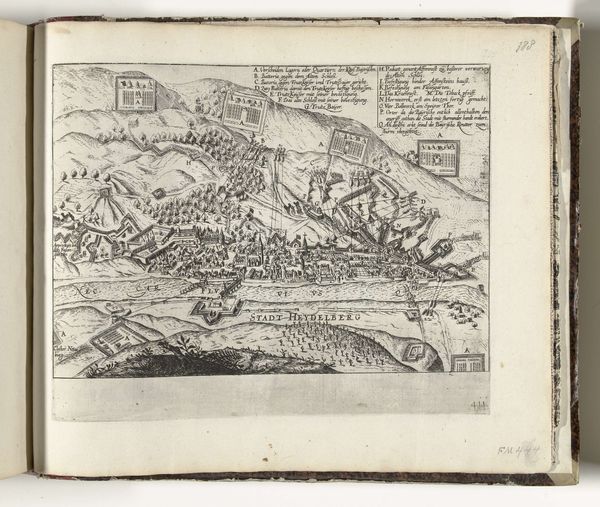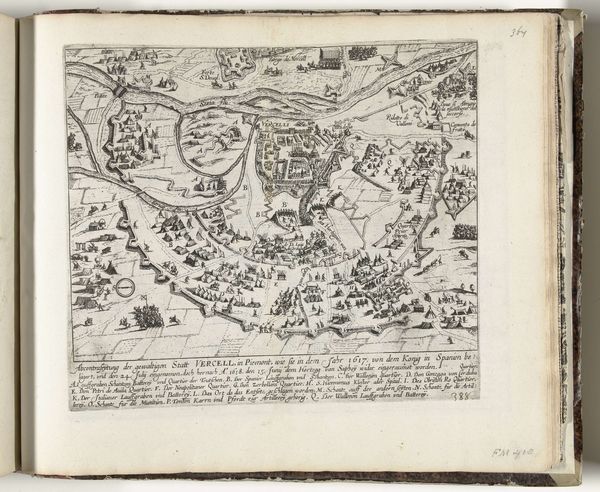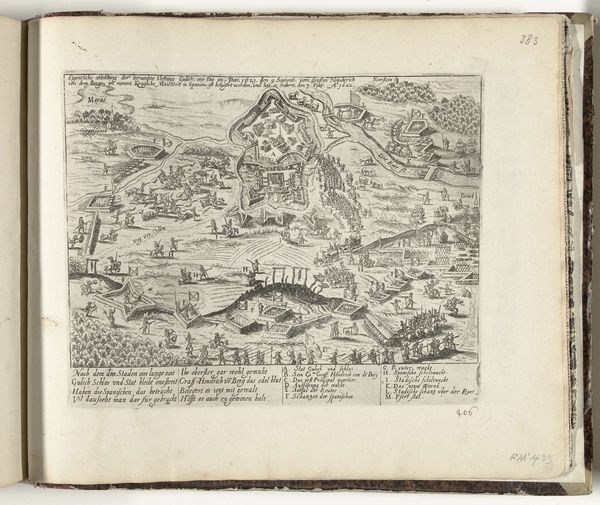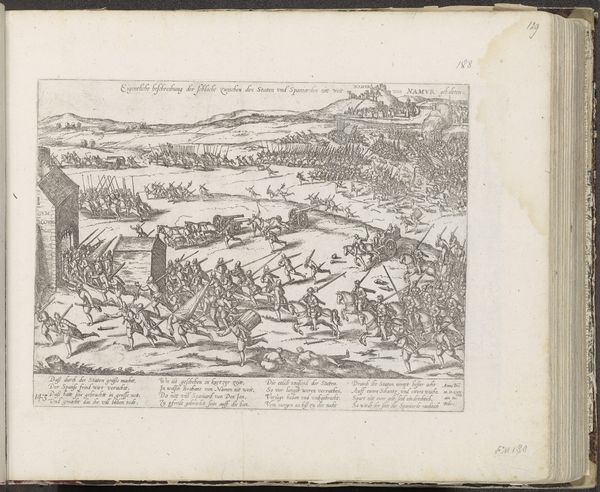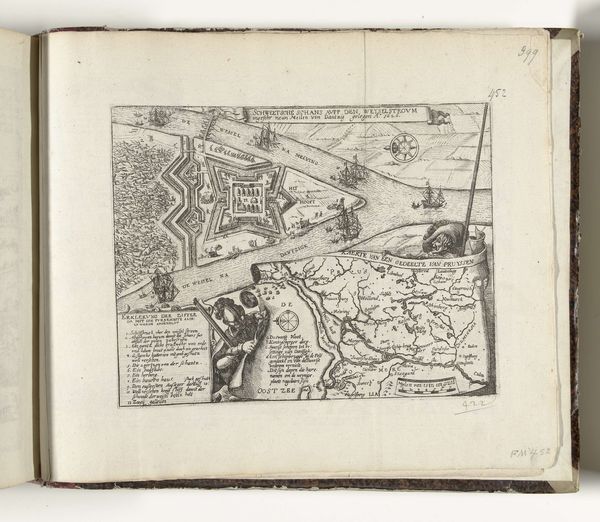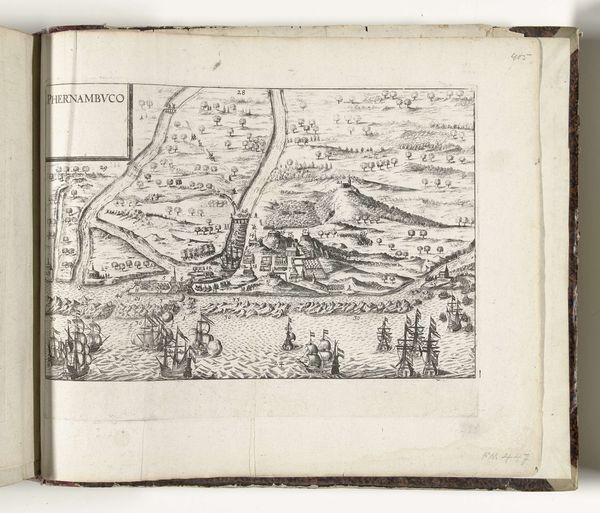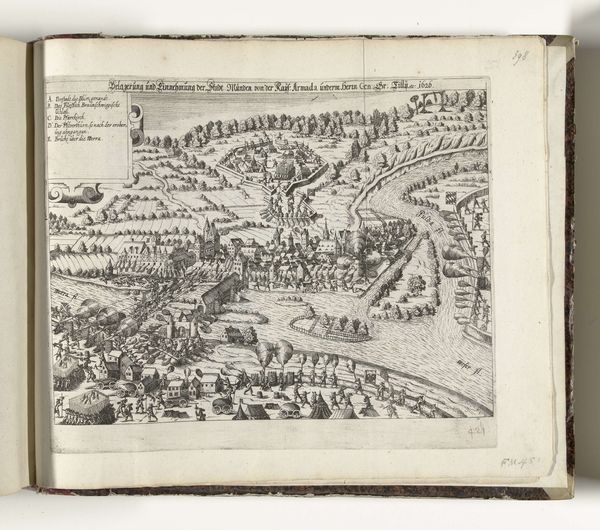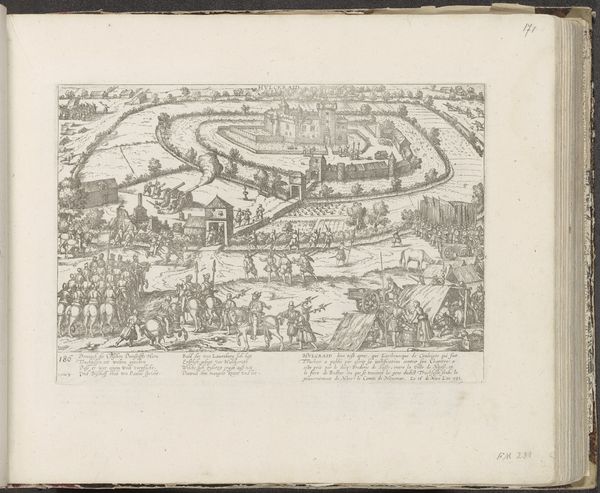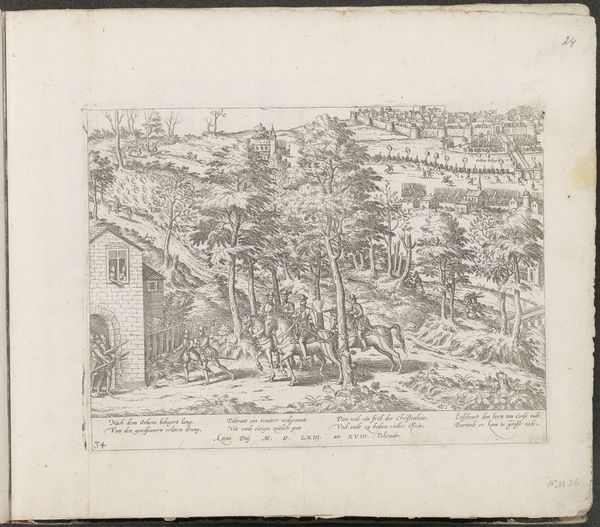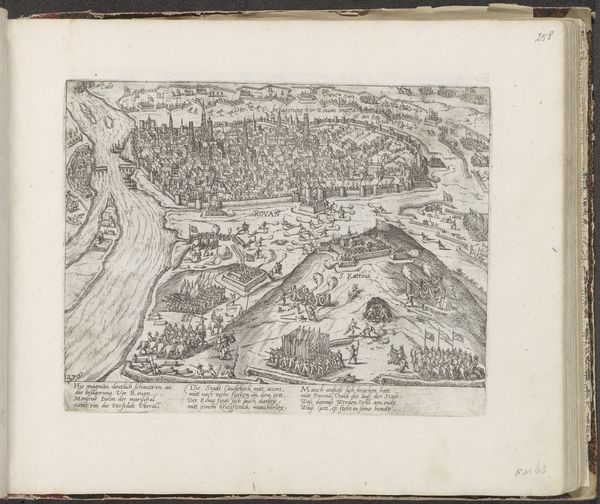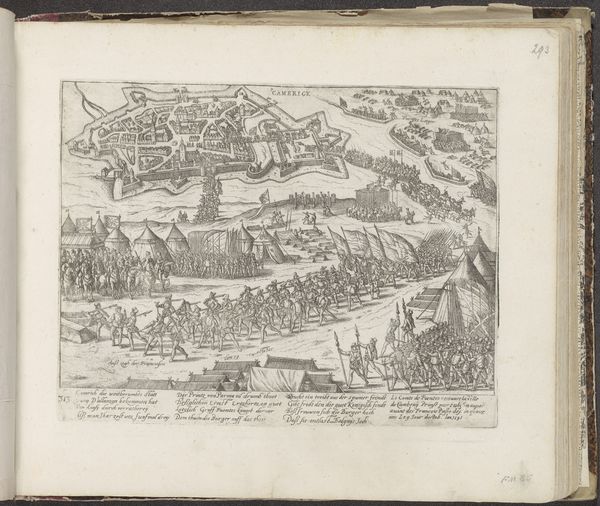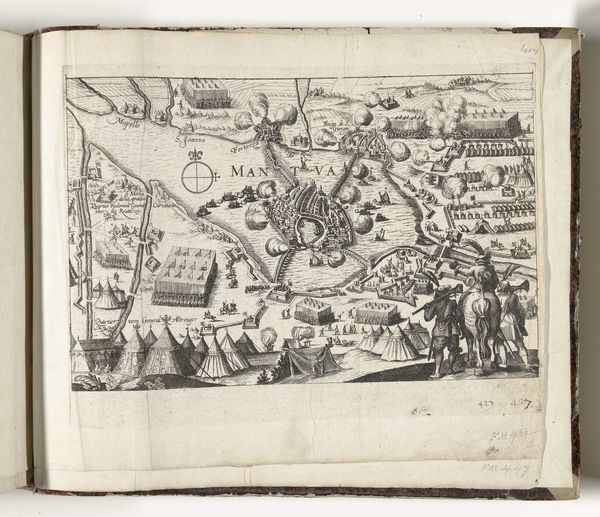
print, ink, engraving
#
narrative-art
#
baroque
# print
#
landscape
#
perspective
#
ink
#
cityscape
#
history-painting
#
engraving
#
miniature
Dimensions: height 201 mm, width 275 mm
Copyright: Rijks Museum: Open Domain
Curator: This print, titled "Slag bij Dessau, 1626," depicts the Battle of Dessau during the Thirty Years' War. It was created between 1626 and 1628, by Frans Hogenberg, an engraver known for his historical and topographical prints. It’s currently held at the Rijksmuseum. Editor: My first impression is how meticulously detailed it is. Even in miniature, there’s a distinct energy conveyed by the lines and patterns of the figures. The linear perspective, while rudimentary, attempts to create a sense of depth across a rather busy composition. Curator: The print offers a bird's-eye view, showcasing troop movements, fortifications, and the surrounding landscape. Hogenberg's work gives a window into how historical events were visualized and disseminated to the public at the time. Prints like these served as a form of news and propaganda, influencing public opinion and shaping collective memory of significant battles. Editor: What’s striking is the organization, a sort of controlled chaos. See how the artist utilizes clusters of similar marks to depict crowds, but individual detail gets lost for the sake of creating textures. I find it conceptually intriguing as to how something this intricately patterned manages to visually communicate an understanding of such violent events. Curator: Indeed. Consider the context: Europe was in turmoil. Visual representations of victories, or even strategic standoffs, played a role in bolstering morale and projecting power. Prints were relatively accessible, which is essential to their societal function in image politics. Editor: Absolutely. And formally, I’m drawn to the use of contrast— the play of light and dark created by the engraving process—it lends the whole scene a dramatic quality that I can recognize in Baroque landscape paintings. Curator: Studying prints like "Slag bij Dessau" helps us understand the intersection of art, politics, and society in the 17th century, revealing how imagery shaped historical narratives. Editor: From my point of view, the aesthetic choices made by Hogenberg contribute significantly to our engagement. We're left with the power of perspective, miniature, and intricate detailing to convey a vast sense of conflict.
Comments
No comments
Be the first to comment and join the conversation on the ultimate creative platform.
